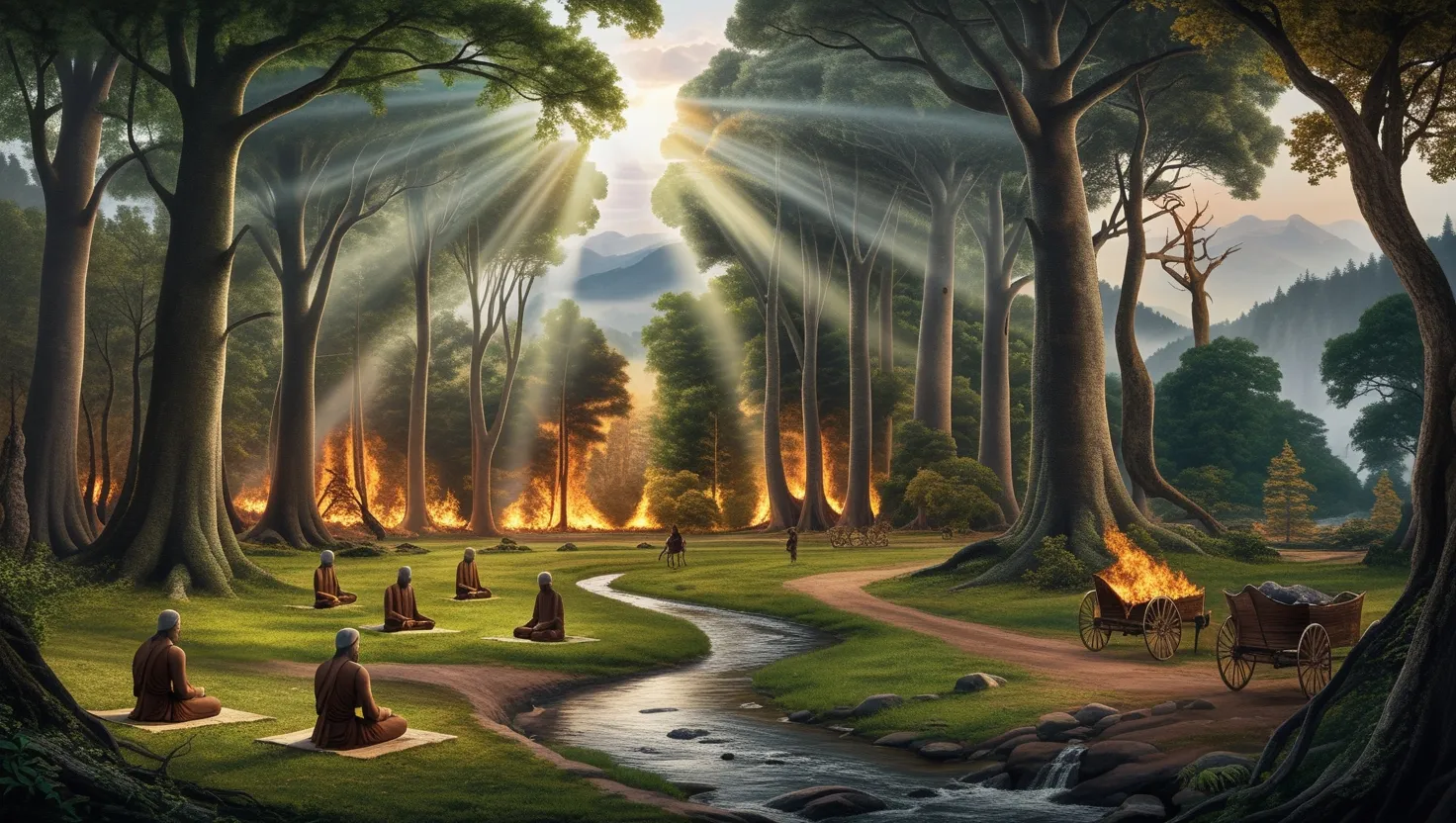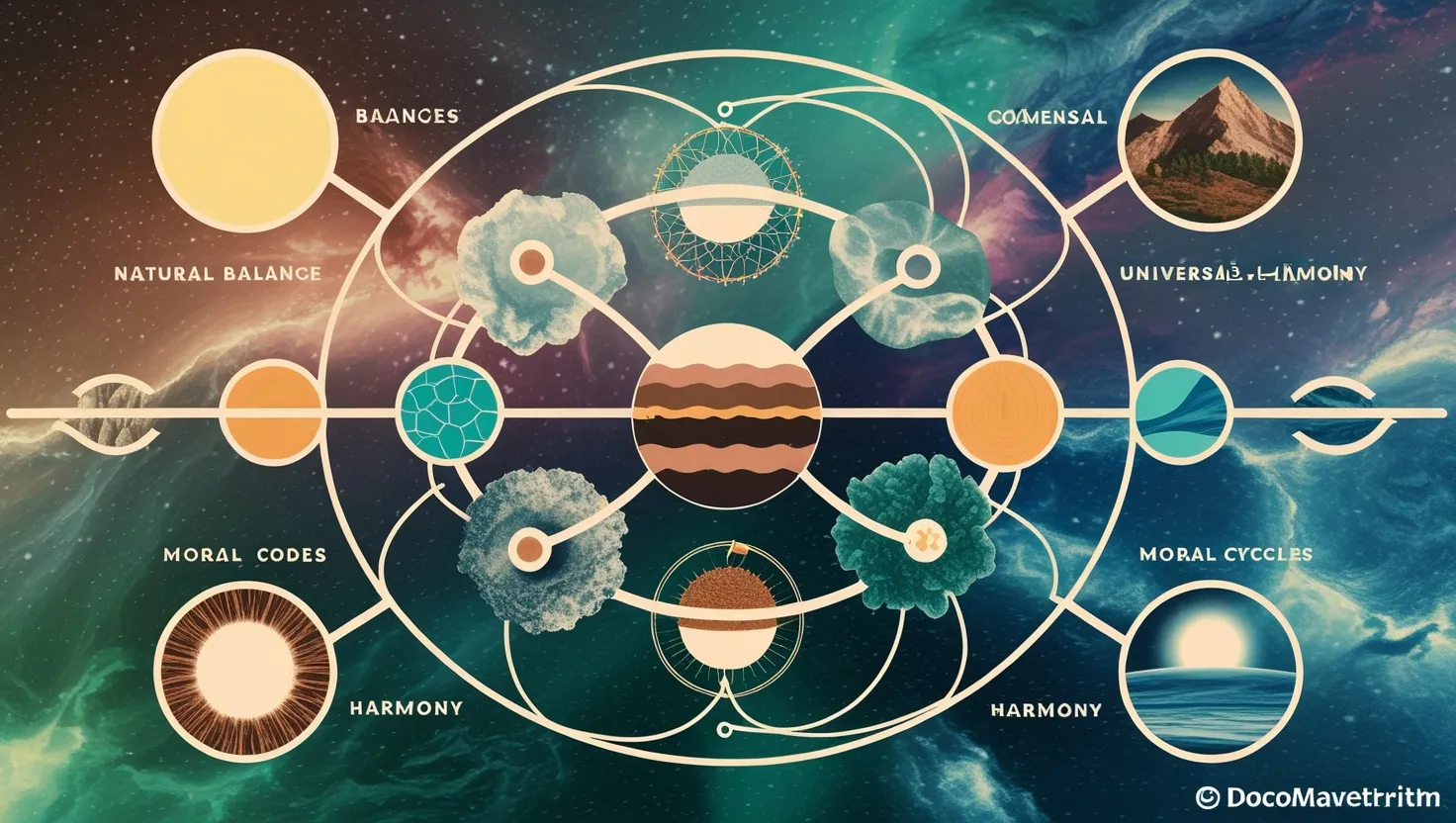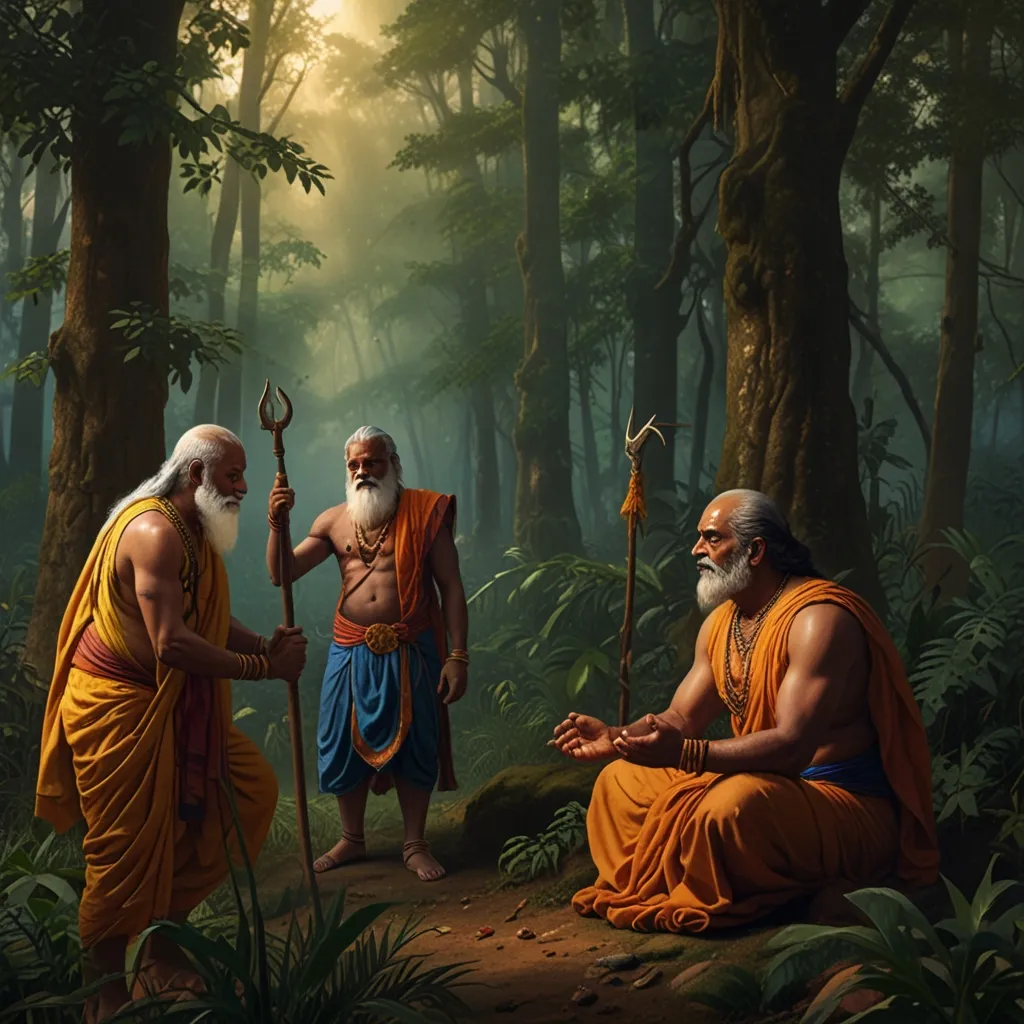If you pause for a moment and picture the Mahabharata, what do you see? For most, it’s a battlefield—warriors in chariots, swirling dust, blaring conches. What if I told you that much of its true drama lies not in the clangor of war, but in the hush of ancient forests, the murmur of rivers, and the silent watch of mountains? Here, nature isn’t scenery—it’s a living participant, as entangled in fate as any hero. Why does this matter? Because the epic’s deepest lessons are often whispered by leaves, sung by rivers, and written in the ashes of burning wood.
The forests in the Mahabharata aren’t merely backdrops for exile or travel; they’re crucibles of change. When the Pandavas enter Kamyaka or Dvaita, their exile becomes more than loss—it becomes opportunity. Forests strip away the trappings of royalty, forcing the brothers to confront themselves and each other. Within these wild spaces, their bonds deepen, their ideals are tested, and their destinies shift. The forest is patient but demanding, indifferent yet nurturing. How often do we see hardship as a teacher, rather than an enemy?
Sages, hermits, and wild deities call the woods home. These aren’t quaint characters sprinkled in for color; they’re keepers of lost wisdoms, guardians of the sacred. It’s in forest clearings that the brothers meet Vyasa, the wanderer of worlds, and Markandeya, whose stories expand their understanding of duty, loss, and life’s transience. Each encounter with the forest’s dwellers is a lesson—on humility, resilience, or cosmic law. The woods, in this sense, function as a living library, their knowledge earned through endurance and openness to the unknown.
“Look deep into nature, and then you will understand everything better,” Einstein once mused. The Mahabharata seems to agree.
But what of the sacred groves? Throughout India’s history, groves have stood protected, sanctified by belief and ritual rather than fencing and law. These living sanctuaries have, for millennia, been refuges for rare plants, animals, and ancient memories. In the epic, groves are places of vision and revelation—not just for gods but for mortals who learn to listen. Interestingly, early communities recognized that the village must nestle among trees to thrive, and many groves were administered by temples, not kings or chiefs. How did it feel to know that to harm a tree was to court spiritual danger, not just ecological loss? The ethos was clear: human life flows within a web that includes every root and branch.
A sacred grove, in this world, isn’t pristine wilderness but a carefully tended patch where human reverence and wildness intermingle. This symbiosis forms a quiet resistance against the urge to dominate or destroy. And yet, the Mahabharata doesn’t shy away from showing how easily the balance tips.
Few episodes are as haunting—or as morally complex—as the burning of the Khandava forest. Here, Arjuna and Krishna set fire to an ancient woodland at Agni’s behest, decimating countless forms of life. Why? To nourish the fire god and to make space for a new city, Indraprastha. What is the price of fulfilling duty, or of building civilization? This burning isn’t a simple act of villainy; it’s a crucible for troubling questions about justice, necessity, and loss. The inferno stands as both warning and lament, a reminder that progress often leaves ash in its wake.
“The clearest way into the Universe is through a forest wilderness,” wrote John Muir. The Mahabharata would add: the way out may be through the fire.
Not to be overlooked, rivers play roles as vivid as the forests. The Ganga and Saraswati are more than waterways—they’re divine mothers, sites of pilgrimage, and witnesses to transformation. Bathing in their waters is not just ritual cleansing but a step into a different state of being. Crossing a river in the Mahabharata almost always signals a turning point, whether it’s a physical journey or a spiritual crossing. The rivers watch, receive, and sometimes judge. Their banks witness births, deaths, oaths, and farewells. Sometimes, it feels as if all of human striving flows toward reunification with the river’s timeless current.
Natural omens and portents pepper the epic. Unseasonal storms, animals behaving strangely, eclipses, and comets—these are more than atmospheric detail. In the Mahabharata, nature reflects the moral climate of the world. When dharma falters, the very winds and skies grieve; the earth shudders in anticipation of war. It’s an ecological understanding before the term existed—human actions ripple outward, unsettling more than just other people. Have you ever wondered whether our storms and wildfires today are just weather, or something more?
“Nature does not hurry, yet everything is accomplished,” observed Lao Tzu. The Mahabharata’s nature, however, sometimes rushes to reflect human urgency, becoming an immediate partner in fate.
The relationship between civilization and the wild in the epic is never straightforward. Indraprastha, the shining city, rises on land taken from the wilderness. But while humans build, the forest persists, both as a threat to be subdued and as a reservoir of spiritual power. To clear land for settlement is to perform violence, even when done in the name of progress. Yet, the survivors of exile return to the wild for renewal and self-discovery. It’s a push and pull—neither state fully complete without the other.
Mountains, too, are much more than inert backdrops. The Himalayas, with their vast silence, serve as the backdrop for Arjuna’s personal quest for celestial weapons. The climb is grueling, his hardships many, but the result is not just acquisition of power—it’s inner transformation. The ascent of a mountain is the oldest metaphor for striving, but here it’s literal. Only by enduring nature’s severity does Arjuna become worthy. Isn’t it curious how the greatest wisdom often waits at the hardest heights?
What is it that makes nature in the Mahabharata feel so present, so insistent? Perhaps it’s because the epic’s authors saw the world as fundamentally interconnected. Human drama and natural cycles are threads in the same tapestry. When the earth is wronged, she responds—sometimes with famine, sometimes with blessing, always with consequence. Forests are not just settings—they’re participants. Rivers aren’t background—they’re mothers, judges, and witnesses. The earth herself is a recurring character, with needs and powers that can’t be ignored.
Ask yourself: do we recognize these relationships in our own time, or have we forgotten the cost of forgetting? The Mahabharata, in its grand sweep, quietly insists that nature’s laws cannot be overruled by human will alone. Our fortunes are braided with the land’s health, the river’s patience, the forest’s strength.
“All things are connected like the blood that unites us,” said Chief Seattle. “We do not weave the web of life; we are merely a strand in it.”
In a world beset by climate anxiety, the Mahabharata’s vision is startlingly relevant. Sacred groves stand as examples of what reverence can protect, even as burning forests warn of what can be lost in the pursuit of power or comfort. The epic’s nature is neither sentimental nor easily tamed. Its groves demand humility. Its fires threaten hubris. Its rivers cleanse, but also carry the dead.
So next time you read—or remember—the Mahabharata, listen for the silence between battles. Notice the groves, the rivers, the mountains. In these, the truest mysteries and toughest questions are hidden. Nature, in all her complexity, shapes destinies and delivers judgment. The Mahabharata’s forests and flames are a reminder: our choices matter, not only to each other, but to the world that bears witness.
“What we are doing to the forests of the world,” wrote Mahatma Gandhi, “is but a mirror reflection of what we are doing to ourselves and to one another.”
How might our own stories—personal and collective—change, if we took this lesson to heart?






